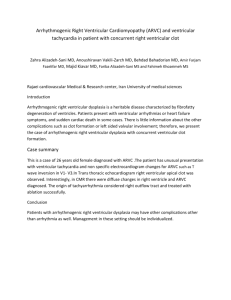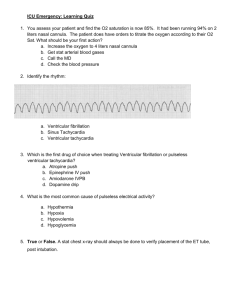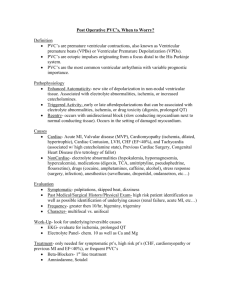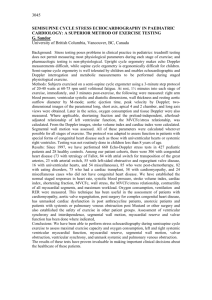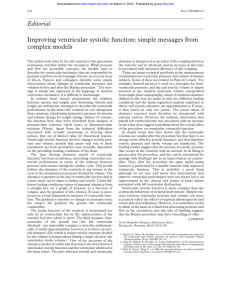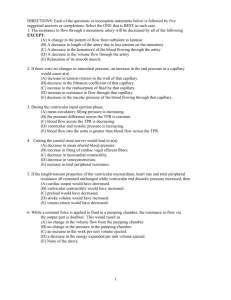Supplementary material - European Heart Journal
advertisement
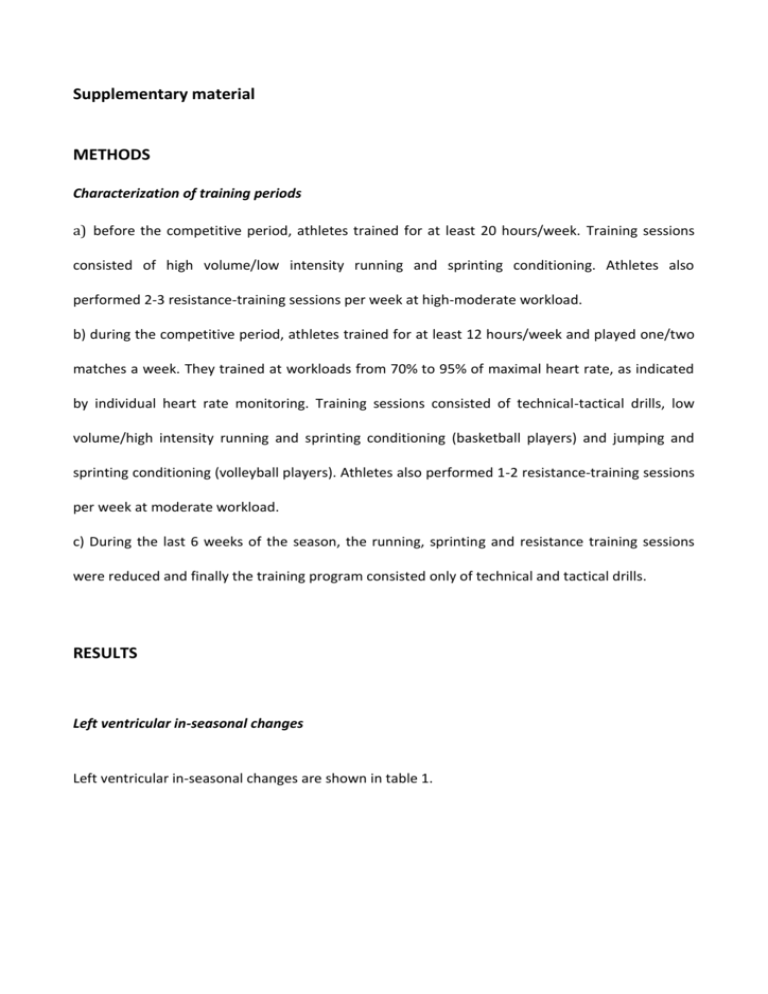
Supplementary material METHODS Characterization of training periods a) before the competitive period, athletes trained for at least 20 hours/week. Training sessions consisted of high volume/low intensity running and sprinting conditioning. Athletes also performed 2-3 resistance-training sessions per week at high-moderate workload. b) during the competitive period, athletes trained for at least 12 hours/week and played one/two matches a week. They trained at workloads from 70% to 95% of maximal heart rate, as indicated by individual heart rate monitoring. Training sessions consisted of technical-tactical drills, low volume/high intensity running and sprinting conditioning (basketball players) and jumping and sprinting conditioning (volleyball players). Athletes also performed 1-2 resistance-training sessions per week at moderate workload. c) During the last 6 weeks of the season, the running, sprinting and resistance training sessions were reduced and finally the training program consisted only of technical and tactical drills. RESULTS Left ventricular in-seasonal changes Left ventricular in-seasonal changes are shown in table 1. Supplementary Table 1. Left ventricular echocardiographic parameters observed during the agonistic season in competitive athletes. Variable Pre-season Mid-season End-season Overall P value LV end-diastolic volume, mL 128.7 ± 33.0 137.2 ± 32.7 143.1 ± 36.5* .033 LV end-systolic volume, mL 53.6 ± 14.6 55.5 ± 12.2 57.4 ± 16.4 .46 LV ejection fraction, % 58.5 ± 0.6 59.1 ± 0.5 60.0 ± 0.5 .24 LVM, g 158.8 ± 57.2 177.9 ± 56.6† 178.5 ± 55.3† .007 e’/a’ ratio 2.30 ± 0.51 2.55 ± 0.96 2.32 ± 0.69 .55 E/e’ ratio 5.1 ± 0.7 5.2 ± 0.7 4.8 ± 0.4‡ .049 -19.5 ± 2.9 -19.7 ± 2.4 -20.2 ± 2.4 .57 LV longitudinal strain, % Data are expressed as mean±SD. LV, left ventricular; LVM, left ventricular mass. *p<.05 vs. pre-season; †p<.0005 vs. pre-season; ‡p <.05 vs. mid-season. Reproducibility of RV measurements Strain analysis was feasible in all subjects and none of the participants was excluded because of poor quality imaging. A significant high consistency (ICC>0.80) was proven for dimensional and strain repeated measurements (see table 2). Standard error of measurement/mean ratio was <5%, thus the accuracy was high and random or systematic errors did not affect the outcomes. Changes measured at mid- and end-season time-points were greater than minimum detectable change in absolute values, thus the observed variations have to be considered as determined by the effects of exercise conditioning rather than by statistical variability. Supplementary Table 2. Relative and absolute reliability of measurements: Intraclass Correlation Coefficient (ICC3,1), SEM and MDC95%. r CI95%low CI95%up F14,28 EDDbas 0,9883 0,7065 0,9461 19,5240 EDDmed 0,9636 0,3482 0,8420 RVD area 0,9669 0,3844 RVS area 0,9300 RV strain 0,9502 p SEM mean SEM/mean MDC95% 8,05E-11 0,6349 39,2444 0,0162 1,7598 6,1788 2,2528E-05 0,8207 31,4667 0,0261 2,2748 0,8554 6,8229 8,85E-06 0,7015 24,5311 0,0286 1,9443 0,0976 0,7181 3,1445 0,00478231 0,5585 13,3936 0,0417 1,5480 0,2279 0,7903 4,4774 3,65E-04 0,9712 -27,5520 -0,0352 2,6919 EDD, end-diastolic diameter; RVD, right ventricular diastolic; RVS, right ventricular systolic.

